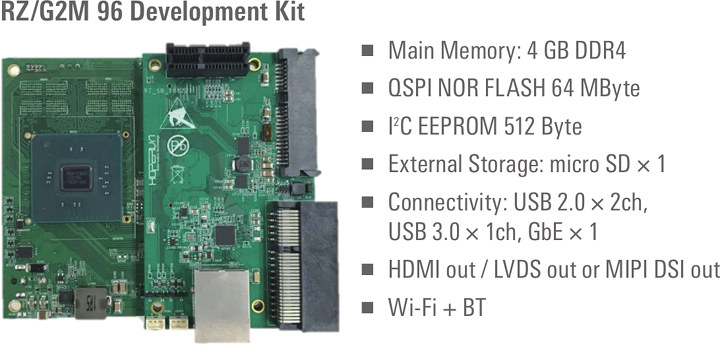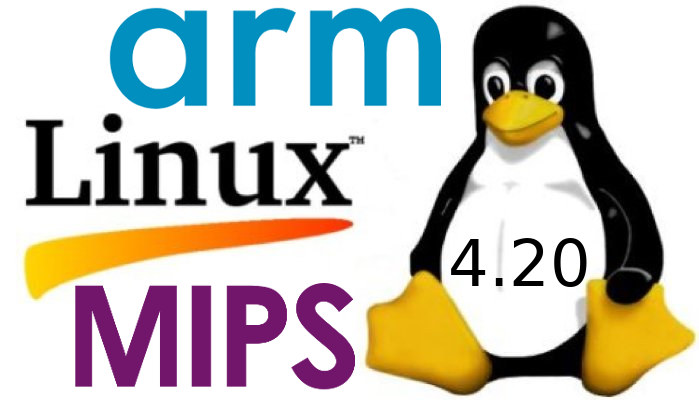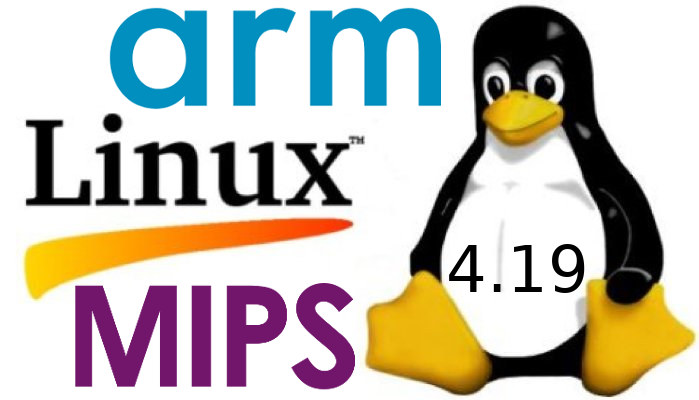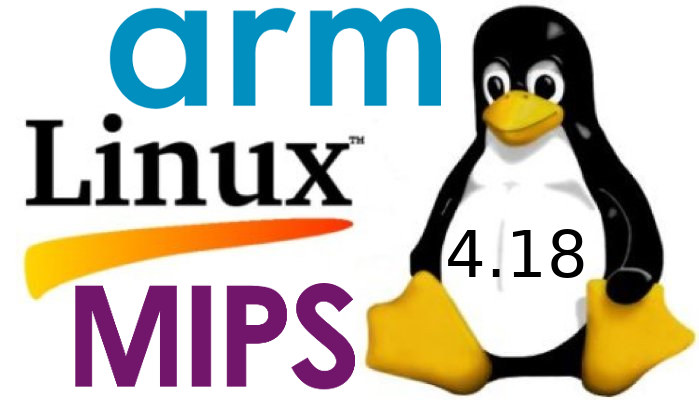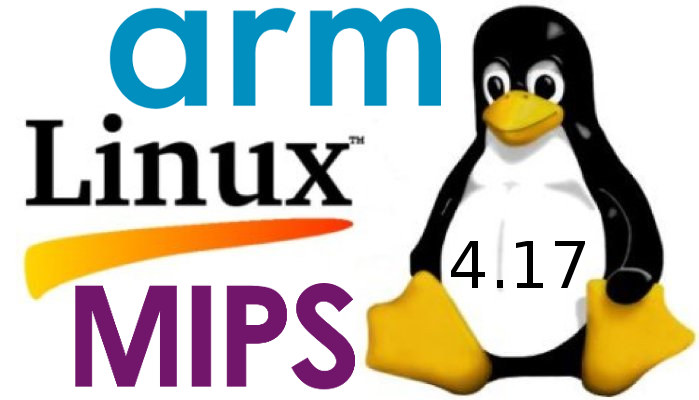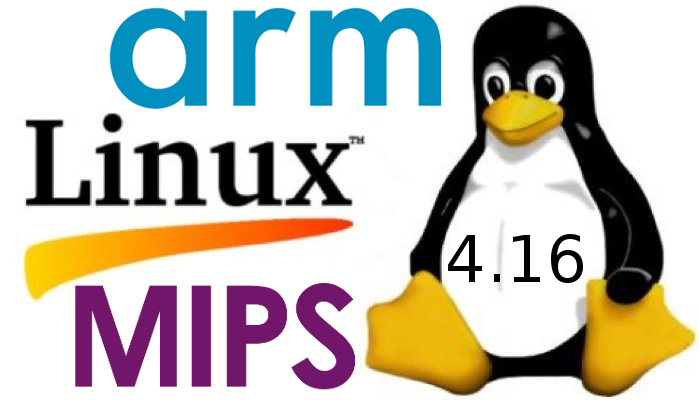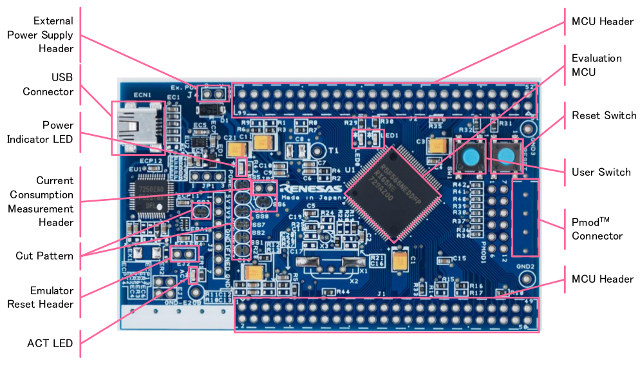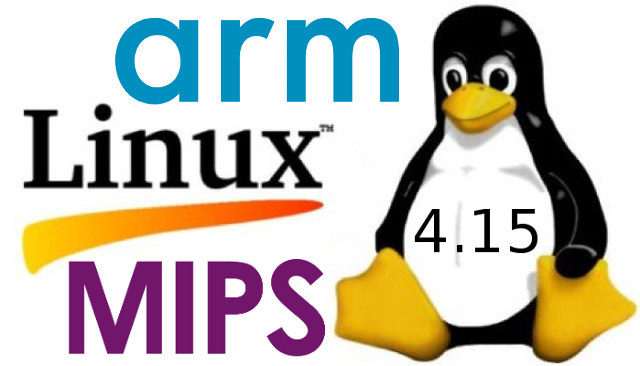Renesas RZ/G1 Cortex-A15/A7 processor series was introduced in 2016 targeting industrial human machine interface, and RZ/G1M was one the the first processors supported by the industrial-grade CIP Super Long-Term Support (SLTS) Linux kernel – as part of Renesas RZ/G Linux Platform – with commitment of over 10 years of support. The company has now launched a 64-bit version of the industrial processors with Renesas RZ/G2 family featuring up to eight Cortex-A53/A57 cores and supported by RZ/G Linux Platform for long term Linux support. Renesas RZ/G2 family is now comprised of four SKUs with the following key features and specifications. RZ/G2 Series RZ/G2E RZ/G2N RZ/G2M RZ/G2H Economical Mid-Range (Pin Compatible) Highest Performance CPU (64-bit ARMv8A) 2x Cortex-A53 @ 1.2GHz L1, L2 Parity/ECC 2x Cortex-A57 @ 1.5GHz L1, L2 Parity/ECC 2x Cortex-A57 @ 1.5GHz 4x Cortex-A53 @ 1.2GHz L1, L2 Parity/ECC 4x Cortex-A57 @ 1.5GHz 4x Cortex-A53 @ 1.2GHz L1, L2 Parity/ECC […]
Linux 4.20 Release – Main Changes, Arm and MIPS Architectures
After Greg K-H handling Linux 4.19 release, Linus Torvalds is back at the helm, and released Linux 4.20 just before Christmas: Let’s face it, last week wasn’t quite as quiet as I would have hoped for, but there really doesn’t seem to be any point to delay 4.20 because everybody is already taking a break. And it’s not like there are any known issues, it’s just that the shortlog below is a bit longer than I would have wished for. Nothing screams “oh, that’s scary”, though. And as part of the “everybody is already taking a break”, I can happily report that I already have quite a few early pull requests in my inbox. I encouraged people to get it over and done with, so that people can just relax over the year-end holidays. In fact, I probably won’t start pulling for a couple of days, but otherwise let’s just […]
Linux 4.19 Release – Main Changes, Arm and MIPS Architectures
With Linus Torvalds taking a leave from the Linux kernel project, Greg Kroah-Hartman was the one to release Linux 4.19 last Sunday: Hi everyone! It’s been a long strange journey for this kernel release… While it was not the largest kernel release every by number of commits, it was larger than the last 3 releases, which is a non-trivial thing to do. After the original -rc1 bumps, things settled down on the code side and it looks like stuff came nicely together to make a solid kernel for everyone to use for a while. And given that this is going to be one of the “Long Term” kernels I end up maintaining for a few years, that’s good news for everyone. A small trickle of good bugfixes came in this week, showing that waiting an extra week was a wise choice. However odds are that linux-next is just bursting so […]
Linux 4.18 Release – Main Changes, Arm and MIPS Architecture
Linus Torvalds has just announced the release of Linux 4.18: One week late(r) and here we are – 4.18 is out there. It was a very calm week, and arguably I could just have released on schedule last week, but we did have some minor updates. Mostly networking, but some vfs race fixes (mentioned in the rc8 announment as “pending”) and a couple of driver fixes (scsi, networking, i2c). Some other minor random things (arm crypto fix, parisc memory ordering fix). Shortlog appended for the (few) details. Some of these I was almost ready to just delay to until the next merge window, but they were marked for stable anyway, so it would just have caused more backporting. The vfs fixes are for old races that are really hard to hit (which is obviously why they are old and weren’t noticed earlier). Some of them _have_ been seen in real […]
Linux 4.17 Release – Main Changes, Arm & MIPS Architectures
Linus Torvalds released Linux 4.17 last Sunday: So this last week was pretty calm, even if the pattern of most of the stuff coming in on a Friday made it feel less so as the weekend approached. And while I would have liked even less changes, I really didn’t get the feeling that another week would help the release in any way, so here we are, with 4.17 released. No, I didn’t call it 5.0, even though all the git object count numerology was in place for that. It will happen in the not _too_distant future, and I’m told all the release scripts on kernel.org are ready for it, but I didn’t feel there was any real reason for it. I suspect that around 4.20 – which is I run out of fingers and toes to keep track of minor releases, and thus start getting mightily confused – I’ll switch […]
Linux 4.16 Release – Main Changes, Arm and MIPS Architectures
Linus Torvalds has just released Linux 4.16: So the take from final week of the 4.16 release looks a lot like rc7, in that about half of it is networking. If it wasn’t for that, it would all be very small and calm. We had a number of fixes and cleanups elsewhere, but none of it made me go “uhhuh, better let this soak for another week”. And davem didn’t think the networking was a reason to delay the release, so I’m not. End result: 4.16 is out, and the merge window for 4.17 is open and I’ll start doing pull requests tomorrow. Outside of networking, most of the last week was various arch fixlets (powerpc, arm, x86, arm64), some driver fixes (mainly scsi and rdma) and misc other noise (documentation, vm, perf). The appended shortlog gives an overview of the details (again, this is only the small stuff in […]
Low Cost Renesas Target Boards for RX MCUs are Designed for Home Appliances, Building & Industrial Automation
Renesas Electronics has announced three new Target Boards for the RX65N, RX130 and RX231 32-bit Microcontroller (MCU) groups designed for home appliance, building and industrial automation applications. Each board has minimal features with an on-chip debugger, a mini USB port, the micro-controller, and through-hole pin headers providing access to all MCU signals. This design allows to access all MCU features while keeping the price below $30. Renesas Target Board specifications: MCU Renesas RX65N (R5F565NEDDFP) 32-bit RXv2 MCU @ 120 MHz with 2MB+32KB ROM, 640KB RAM Renesas RX130 (R5F51308ADFP) 32-bit MCU @ 32 MHz with 512KB+8KB ROM, 48 KB RAM Renesas RX231 (R5F52318ADFP) 32-bit RXv2 MCU @ 54 MHz with 512KB+8KB ROM, 64 KB RAM Expansion Unpopulated 12-pin Pmod connector 2x unpopulated 50-pin MCU headers Misc 2-pin Current measurement header Reset and user push buttons Power LED (Green), ACT LED (Green), 2x user LEDs (Green) 2-pin emulator reset header Power Supply […]
Linux 4.15 Release – Main Changes, Arm and MIPS Architectures
Linus Torvald has released Linux 4.15 last Sunday: After a release cycle that was unusual in so many (bad) ways, this last week was really pleasant. Quiet and small, and no last-minute panics, just small fixes for various issues. I never got a feeling that I’d need to extend things by yet another week, and 4.15 looks fine to me. Half the changes in the last week were misc driver stuff (gpu, input, networking) with the other half being a mix of networking, core kernel and arch updates (mainly x86). But all of it is tiny. So at least we had one good week. This obviously was not a pleasant release cycle, with the whole meltdown/spectre thing coming in in the middle of the cycle and not really gelling with our normal release cycle. The extra two weeks were obviously mainly due to that whole timing issue. Also, it is […]


